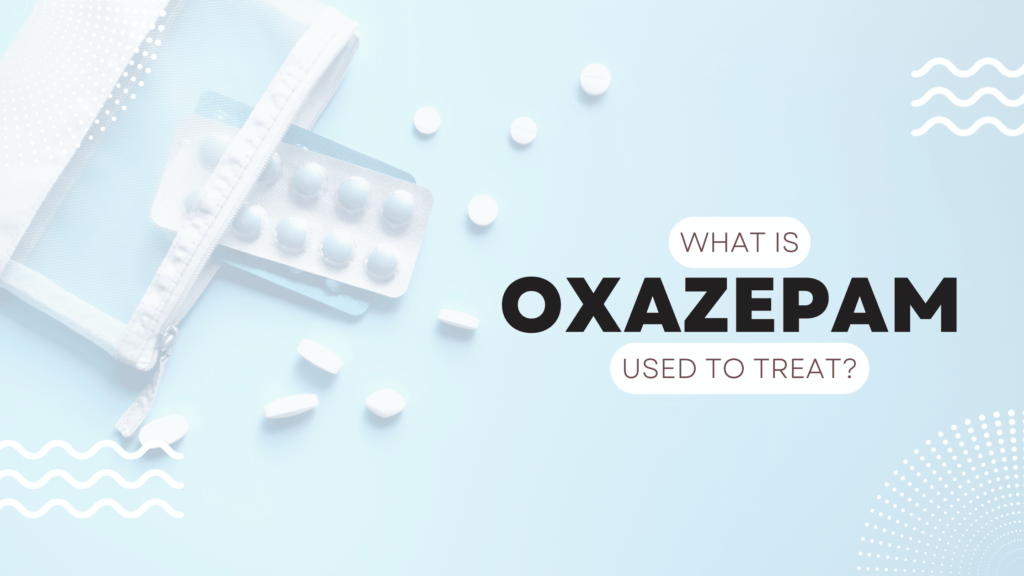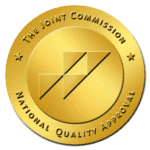Oxazepam is a medication primarily for managing anxiety disorders. The oxazepam brand name is Serax. The medicine is only intended for short-term use treat symptoms of anxiety. Sometimes it may be part of a mental illness treatment plan for psychosis and depression and as a therapy for alcohol withdrawal and alcohol dependence treatment.
What Is Oxazepam?
Oxazepam (Serax) is a benzodiazepine. Benzodiazepines or “benzos” are drugs to treat anxiety, seizures, and insomnia. The drug class is considered safe in the short term and when prescribed by a health care professional. Long-term use, however, can lead to dependence, tolerance, and adverse effects.
- Taking a benzodiazepine changes the activity of the neurons, triggering anxiety and stress.
- The Food and Drug Administration (FDA) approves using these drugs to treat insomnia, generalized anxiety disorder, social anxiety disorder, seizure disorders, and panic disorders.
- Off-label prescribing uses for benzos can include the treatment of other sleep disorders to manage alcohol withdrawal, tic disorders, and bipolar disorder.
- A benzodiazepine typically works by increasing the effects of gamma-aminobutyric acid (GABA), which is a neurotransmitter.
- Neurotransmitters are brain chemicals that can have either a calming or stimulating effect. GABA sends your body containing messages.
- If you feel anxious, you could be experiencing too much stimulation in the brain. Benzodiazepines can send messages to counteract overstimulation and related adverse reactions, reducing anxiety symptoms.
- These drugs can have anxiolytic effects and have some effects similar to muscle relaxants.
Risk for Abuse
Benzos are meant for short-term relief and use only. Doctors will usually prescribe them for no more than a few weeks at a low therapeutic dose because they have the potential for abuse and addiction.
A medical professional should limit dosages and avoid prescribing them for an extended period due to the risks that occur over time.
A person’s addiction to benzos is technically known as “hypnotic, sedative or anxiolytic use disorder.” The term is from the Diagnostic and Statistical Manual of Mental Disorders 5th Edition (DSM-5).
The following are symptoms of this substance use disorder:
- Taking more than the effective dose or larger amounts of the drug or taking it for a longer time period than intended.
- You’re taking the drug to get high rather than for the therapeutic effects.
- Spending significant amounts of time obtaining, using, and recovering from the drug.
- You experience withdrawal symptoms, including drug cravings, when you don’t use the drug.
- You develop a tolerance, so you need higher amounts to get the desired effects you seek.
- You have problems in your performance at home, school, or work because of the effects of drug addiction.
Since benzodiazepines are legitimate prescription medications, people may not use as much caution when taking them as they would with street drugs. We often think prescription medicines are inherently safe, which isn’t always true.
If you have a prescription for benzos and take them exactly as prescribed, your risk of abuse or dependence is low. This risk increases if you don’t follow your doctor’s instructions.
Common side effects of benzo abuse and overdose can include:
- Muscle weakness
- Cognitive impairment
- Emotional disturbances
- Depressant effects
- Slurred speech
- Problems with judgment and decision-making
- Confusion
- Blurry vision
- Loss of motor coordination
- Dizziness
- Drowsiness
- Coma
- Problems breathing
- Risk of withdrawal reactions
Death is rare with a benzo overdose if this is the only type of drug used. There is a significant risk of overdose if someone takes benzodiazepines with other drugs, such as opioids, or even drinks alcohol while using them.
The risks of serious side effects of oxazepam and other benzos are more likely in elderly patients because of factors like drug interactions and underlying health conditions.
Side effects are also more likely in people with kidney disease or liver disease because of the impacts on how their bodies process substances over a period of time.
Oxazepam Uses
As discussed above, Oxazepam is a medication with calming, sedative effects. The drug affects the central nervous system, including the limbic, thalamic, and hypothalamic systems. The medication can relax the skeletal muscles and block excitatory nerve transmission.
If someone is prescribed the medication, they take it orally in capsule form. Sometimes it’s taken several times a day. Doses may be 10, 15, or 30 mg.
Serax is a safer benzo than some other types because of how it’s metabolized in the body. It’s less likely to accumulate, although it still has an abuse potential because of the sedative effects.
The medicine is a Schedule IV drug in the United States. According to the DEA, Schedule IV drugs have legitimate medical uses but are potentially habit-forming.
If someone abuses Serax, it’s almost always along with other substances. For example, someone might use it when they also abuse stimulants to come off the high, or they might use benzodiazepines to increase the effects of depressants like opioids or alcohol.
Oxazepam Side Effects
Possible oxazepam side effects and undesirable effects can include:
- Dizziness
- Blurred vision
- Feeling lightheaded
- Dry mouth
- Upset stomach
- Changes in appetite
- Constipation
- Problems urinating
- Changes in sex drive or function
- Impaired coordination
- Increased anxiety
- Depression
There can be serious adverse effects of Serax to be aware of, requiring immediate medical attention. These include:
- Shuffling walk
- Allergic reactions
- Tremor or inability to sit still
- Yellowing of the eyes or skin
- Irregular heartbeat or changes in blood pressure
- Fever
- Problems breathing or swallowing
- Memory problems
- Changes in behavior
- Delirium
If someone regularly uses the drug and then has abrupt discontinuation of oxazepam rather than a gradual taper, they can also experience withdrawal symptoms. Withdrawal effects of oxazepam and other benzos include:
- Panic or anxiety
- Restlessness
- Agitation
- Tremors
- Fatigue
- Dizziness
- Problems with sleep
- Sweating
- Flushing
- Tremors
- Muscle cramps
- Shortness of breath
- Gastrointestinal problems
- Muscle pain
- Headaches
- Seizures
- Hallucinations
Most benzodiazepines aren’t recommended for use for more than two weeks because of the risk of abuse and withdrawal. The effects of oxazepam are slightly different and may be prescribed for more extended treatment periods, but only under careful monitoring and supervision.
Oxazepam for Alcohol Withdrawal Symptoms
One reason oxazepam and other benzos are given is to help treat alcohol dependence and withdrawal.
When someone is alcohol dependent, their brain requires it to function the way it should. If someone’s dependent on alcohol and stops drinking, it significantly affects their brain functioning, leading to alcohol withdrawal syndrome.
Withdrawal side effects from alcohol can be severe or even deadly.
Undesirable effects of alcohol withdrawal can include seizures, hallucinations, vomiting, and heart palpitations.
Benzodiazepines like oxazepam can help with several of the symptoms of alcohol withdrawal syndrome.
- For example, these drugs can help reduce the risk of seizures and tremors, anxiety or panic, and problems with sleeping.
- They can also help with headaches and pain and irritability.
- Along with oxazepam, other benzodiazepines that may be used for alcohol withdrawal include a dose of diazepam (Valium), chlordiazepoxide (Librium), and the lowest dose of lorazepam (Ativan) possible.
- If someone takes benzodiazepines during alcohol withdrawal treatment, how they’re prescribed depends on the severity of their symptoms and the setting of use.
- Since there are so many options in this drug class, each situation can be appropriately treated. These drugs help counteract the most severe possible symptoms of withdrawal from alcohol, and they have fewer side effects than some alternatives.
When someone takes benzodiazepines during alcohol withdrawal, it helps them more successfully manage their symptoms to begin a treatment program to get to a place of long-term recovery.
Mental Health Treatment in San Diego, CA
Oxazepam is a prescription benzodiazepine. The oxazepam brand name is Serax.
The medicine is for managing anxiety disorders, similar mental health disorders and alcohol use disorders, and dependence symptoms. While oxazepam is considered safe when used as instructed for psychiatric patients. However, it has a risk of drug abuse and side effects, as do other anxiolytic drugs, according to clinical studies.
If you’d like to talk to someone about mental health symptoms you’re experiencing, contact the Mental Health Center of San Diego team today by calling (858) 258-9883. If you need immediate medical advice, contact a health care provider.




















